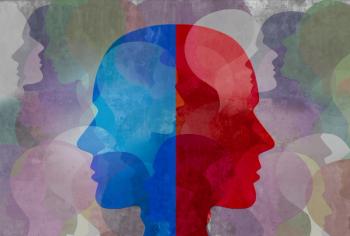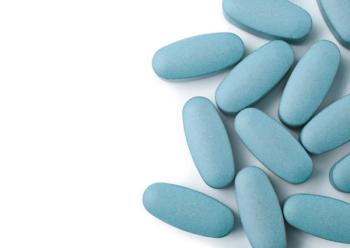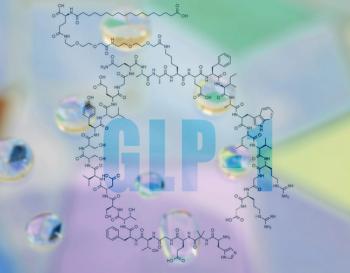
Eyes, Ears, and Emotion: Techniques to Tackle Diagnosing Bipolar Disorder
Key Takeaways
- Bipolar disorder diagnosis is delayed due to complex presentations, patient factors, and lack of definitive lab tests, complicating treatment and worsening outcomes.
- Emerging research on RNA biomarkers, AI applications, and genetic mutations shows promise for developing new diagnostic tools for bipolar disorder.
Discover innovative strategies for early diagnosis and treatment of bipolar disorder, addressing challenges and exploring promising new therapies.
CONFERENCE REPORTER
Patients with bipolar disorder face an average diagnostic delay of 10 years. This gap can lead to misdirected treatments, worsening symptoms, and life altering consequences, but the delay is partly due to the disorder’s complex and often difficult to quantify presentation. At the 2025 Southern California Psychiatry Conference, clinicians Jason Kellogg, Linda Trinh, and Jacob Hanaie presented their lecture “Empowering Clinicians to Identify and Treat Bipolar Disease Earlier in the Disease Course,” where they addressed the persistent challenges in diagnosing bipolar disorder and promising new therapeutic options.1 Focusing on patient symptom insight, clinician investigation, and new tests with potential to measure this disorder may provide better care for patients suffering from bipolar disorder.
In the session, Kellogg outlined what he sees as the 3 core diagnostic challenges for bipolar: patient factors (like expressing their emotions), clinician challenges (like hearing and recognizing subtle symptoms), and the absence of definitive lab tests. For the patient, they may not “fully grasp the terms or concepts used in diagnostic criteria…when asked about their symptoms, making it hard to provide accurate descriptions,” Kellogg explained. The patient’s struggle with recognizing manic symptoms, a dominance of depressive episodes, lack of emotional insight, overlapping symptoms with other disorders, and psychosis also contribute to the complexity clinicians face in diagnosing. Providers, Kellogg said, must navigate the subtleties of early onset symptoms, family history (importantly mood disorders and suicidality), and any insights gained from antidepressant misadventures in which the patient reacted notably to a medication. In bipolar patients, antidepressants can also induce hypomania or prove ineffective, signaling an incorrect diagnosis of major depressive disorder. This factor makes it all the more difficult to identify a correct bipolar diagnosis. High rates of psychiatric and medical comorbidities—including anxiety, substance use disorders, migraines, thyroid dysfunction, and type 2 diabetes—further complicate the diagnostic process.2
With the potential benefits of developing lab-based diagnostic tools, there are unfortunately no definitive blood tests for bipolar disorder currently. However, new research focuses in on RNA biomarkers, RNA editing, artificial intelligence applications, genetic mutations in thyroid pathways, and ceramide-based metabolite profiling. These techniques, Kellog noted, are showing promise and may provide new biological markers for identifying the disorder. Kellogg concluded by underscoring the severe consequences of undiagnosed bipolar disorder, which can lead to impaired relationships, academic and employment issues, and legal or financial problems; diagnosing earlier on in the disease course and preventing these outcomes may become easier with new diagnosis techniques.
Trinh continued with a focus on the treatment landscape, drawing from the Systematic Treatment Enhancement Program for Bipolar Disorder (STEP-BD) trials conducted from 1998 to 2005. This landmark study explored treatment efficacy, relapse prevention, and long-term quality of life through randomized, collaborative care models and longitudinal tracking. Trinh pointed out the study’s result that 58% of participants achieved recovery, but 49% relapsed within two years.
Trinh emphasized the value of non-pharmacological approaches such as psychoeducation, cognitive behavioral therapy, interpersonal and social rhythm therapy, family focused therapy, and lifestyle modifications. In terms of prescription changes from the STEP-BD study, the addition of antidepressants offered no significant benefit over mood stabilizers alone in preventing depressive relapse. For treatment resistant cases, Trinh highlighted combination therapy, electroconvulsive therapy, clozapine, and investigational treatments like ketamine and transcranial magnetic stimulation. Trinh also pointed to recent FDA approvals for acute mania and mixed episodes (including iloperidone, olanzapine, and cariprazine), as well as newer agents for bipolar depression such as lumateperone and lurasidone.
References
1. Kellogg J, Trinh L, Hanaie J. Empowering clinicians to identify and treat bipolar disease earlier in the disease course. Conference Proceedings of the Southern California Psychiatry Conference. July 2025;11-12. Huntington Beach, CA.
2. Goldman ML, Mangurian C, Corbeil T, et al.
Newsletter
Receive trusted psychiatric news, expert analysis, and clinical insights — subscribe today to support your practice and your patients.




